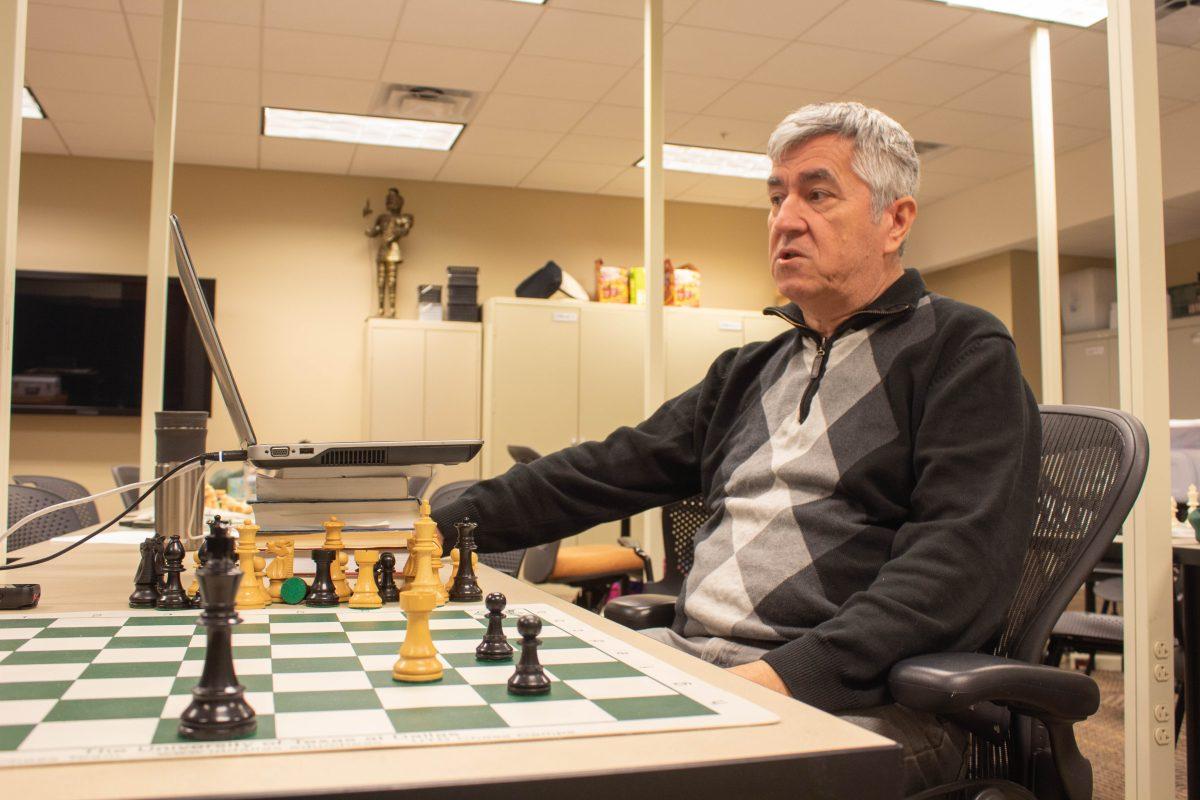The UTD chess team will soon take a step towards future competitions with the help of supercomputers that will reduce the time it takes to analyze players’ moves.
An effort designed to advance the UTD chess team in national and international competitions, the newly designed supercomputer interface will serve as a tool to further develop existing position analysis for the UTD chess team.
Jerry Perez, the director of Cyber Infrastructure Operations in the Office of Information Technology, designed and implemented a chess analysis interface for the UTD chess team. He named the supercomputer “Ganymede.”
Even the best chess players from around the world, such as Magnus Carlsen or Fabiano Caruana, take time to make decisions that could be pivotal in their success in the game. Perez said the introduction of the supercomputer — which will be tested by the chess team this semester — will not only allow for players to make the best decisions during a tournament but will also reduce the amount of time it takes to determine which next steps to take.
“There are more chess piece moves than there are atoms in the universe. It humbles me to think that if everybody had this type of technology, where would chess teams be today?” Perez said. “At UTD, we are going to give our players more access to chess computing. The contest is about who has the best analytical skills and who has retained the most information. This is the arena through which we can test those skills.”
Software engineering junior Angel Arribas Lopez, a member of the chess team at UTD since his freshman year, said although many supercomputers exist right now, the one developed at UTD will have an interface to make the most accurate decisions in the least amount of time. While players must mentally make decisions without the help of technology during an actual competition, these computers allow for the players to anticipate the possible moves of their opponent before they make them.
ChessBase, a widely known program for chess teams, is what UTD chess players currently use to prepare for their national and international competitions. The program creates its own recommendations for each move made by the opponent player, which allows for the physical player to choose and move their pieces correspondingly.
“People try to memorize as many positions as they can, but the supercomputer will make the best decisions in any position, so if we come across that position or similar positions later on, we know what to do,” Lopez said.
Preparation for various national and international tournaments often determines the outcome of the matches played. Rade Milovanovic, the UTD chess team coach since 2001, said when he met Perez, who was then working at a lab at Texas Tech University, they often discussed chess and computer algorithms that could advance chess teams during tournaments.
The old computers used during training sessions contain 20-40 chords, or connections, that allow for a certain speed of calculating strategies. Compared to the old computer used for chess practice, the new supercomputer contains an exponentially larger number of chords.
“With the computer that we use on our laptops, we have to wait like 10 to 15 minutes now,” Lopez said. “The supercomputer is seconds. To have something like this will surely bring our confidence up.”











